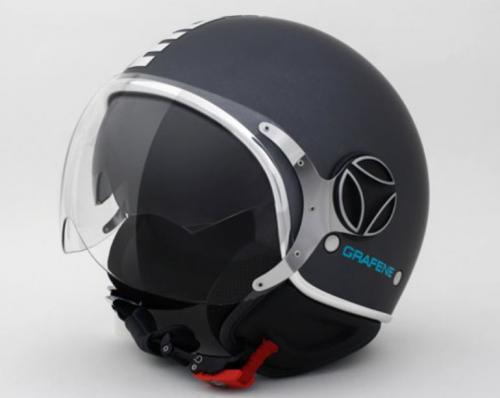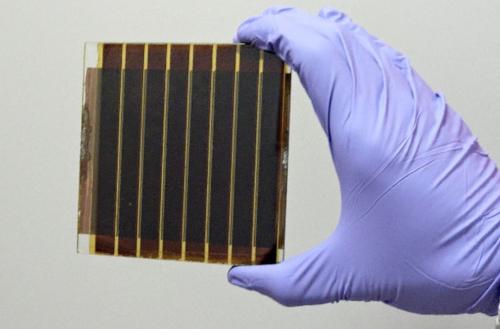
Graphene is one of the world’s most versatile and interesting materials. It is the first 2D-material we know of. In this article, the European Union’s Graphene Flagship explains some of graphene’s most promising applications.
Research into graphene applications is underway in the following sectors: composites and coatings, electronics, photonics and optoelectronics, and sensors. Researchers are also performing studies on graphene’s uses in biomedical technologies and power generation.
Graphene is the strongest, lightest, and thinnest material in the world. It is also the world’s best conductor of heat and electricity. Scientists say that it is so thin that they consider it to be two-dimensional. It is a single layer of pure carbons arranged in a hexagonal lattice pattern.
Composites and coatings
Graphene will significantly enhance the next generation of composites and coating, say scientists. Its super-strength, flexibility, light weight, and conductivity are useful for many different applications.
Regarding graphene’s uses in composites and coatings, the Graphene Flagship says:
“From anti-static and anti-corrosion coatings through to ultra-strong and ultra-lightweight composites, graphene can not only enhance the performance of current materials but also enable new application fields.”

Sensors
Graphene will play key part in the future advances of sensing capabilities. Its large surface area, unique optical properties, and high thermal and electrical conductivity make ideal it for sensors.
Ultra-sensitive sensors based on graphene can also be lighter, cheaper, and smaller than current sensors.
In the world of sensors, there are several promising graphene applications. There are potential applications in, for example, chemical-based gas and pH and environment contamination sensors. Scientists say that we could also improve pressure and strain sensors with graphene.
Energy (power)
Global demand for power generation and storage is progressively increasing. GRMs, with their high surface area, light weight nature, and high mechanical flexibility have a key role to play. Specifically, in meeting this growing demand for both energy storage and generation. The letters GRMs stand for graphene and related materials.
Regarding graphene’s potential uses, Graphene Flagship mentions the following areas in the energy sector:
“Solar cells, batteries, super capacitors, hydrogen storage and fuel cells are all areas where GRMs can make a difference. These could be used to produce unique, new devices or integrate into current devices to boost their performance.”
“For example, activated graphene enables super capacitors for energy storage and also increases their lifespan, energy capacity and charge rate for lithium ion batteries.”
GRMs, such as molybdenum disulphide, can extend the lifespans of perovskite solar cells.

Biomedical technologies
Demand for healthcare services is forever increasing. This subsequently leads to growing demand for novel healthcare solutions.
These solutions will need to be cheaper and at least as effective as current solutions. Graphene has a high surface area, great functionalization potential, as well as electron mobility. Therefore, it is likely to play a key role in the advancement of biomedical technologies.
Regarding graphene’s large surface area, the Graphene Flagship says:
“The surface area of graphene makes an excellent platform for drug delivery and the conductivity makes for effective biosensors.”
“The ability of graphene to be made into scaffolds whilst maintaining the inherent conductivity can be put to use in tissue engineering. New research has shown that graphene can be incorporated with a polymer to make very sensitive electromechanical sensors, and that it can be used to make improved deep brain implants.”
Electronics
Graphene is highly conductive, strong, thin, and very flexible. These qualities make it ideal for innovative products such as chips, flexible screens, and wearable technology.
In electronics, miniaturization is advancing apace. Graphene is thin and strong, i.e., it is an ideal substance for minuscule products.
The Graphene Flagship says the following regarding the wireless domain:
“In the wireless domain, first prototypes of flexible near-field communication antennas based on graphene have been built, providing a very competitive solution for flexible radio frequency identification tags.”
“Coupling graphene’s ability to be integrated into electronics with its excellent sensing ability means that it can also be used to provide the building blocks for the internet of things.”
Photonics and optoelectronics
Its broadband optical absorption and excellent electrical properties make graphene ideal for next-generation optical communications systems and optoelectronics.
Researchers say that it is easy to integrate graphene with silicon photonic systems.
Graphene-based technologies are already proving integral to 5G. In the optoelectronics field, graphene will play a major role in, for example, optical switches, energy harvesting, and wireless communication.
The Graphene Flagship
The Graphene Flagship, with a €1 billion budget, is the European Union’s (EU’s) largest research initiative. The EU says it represents “a new form of joint, coordinated research initiative on an unprecedented scale.”
According to the Graphene Flagship:
“The Graphene Flagship is tasked with bringing together academic and industrial researchers to take graphene from the realm of academic laboratories into European society in the space of 10 years, thus generating economic growth, new jobs, and new opportunities.”
